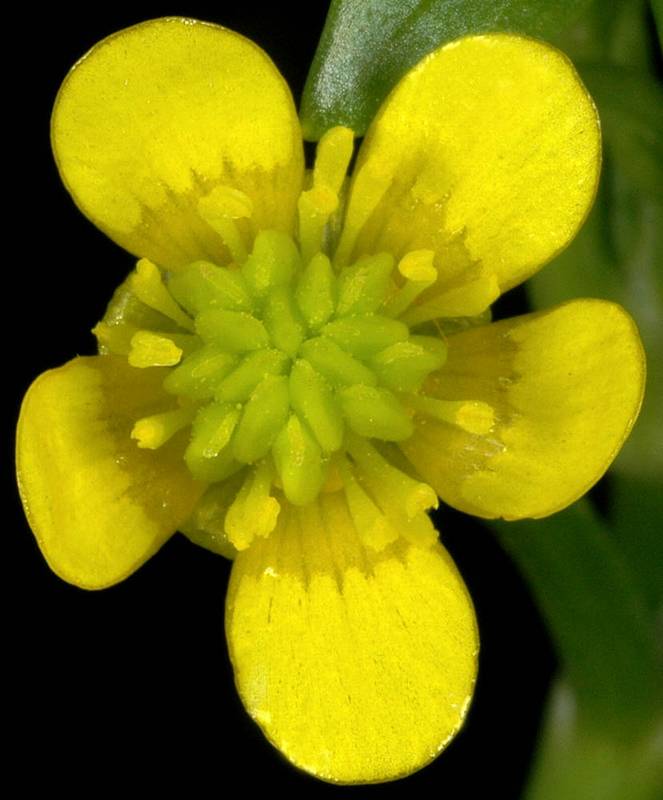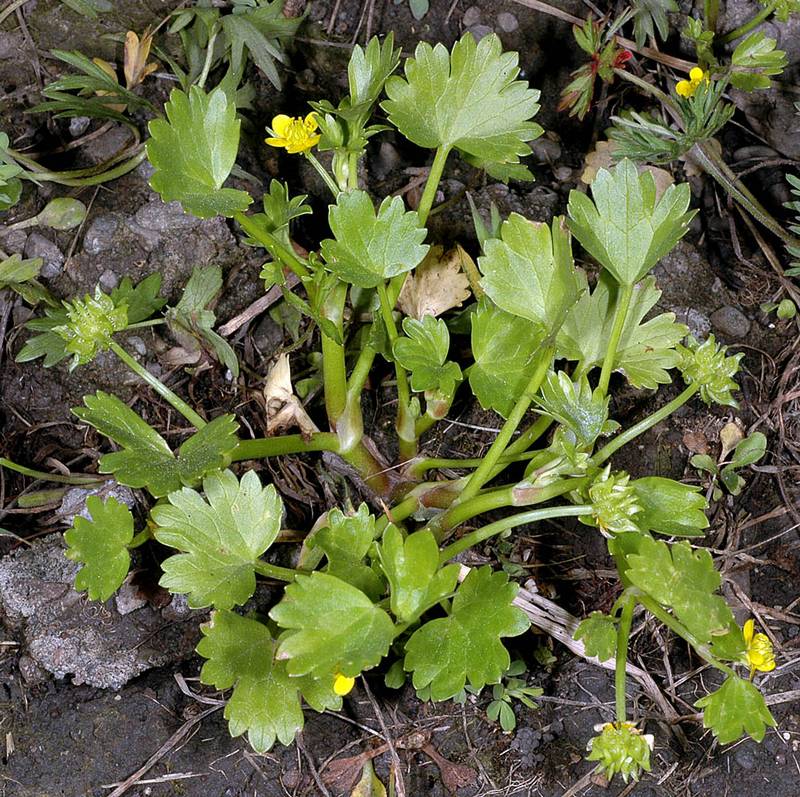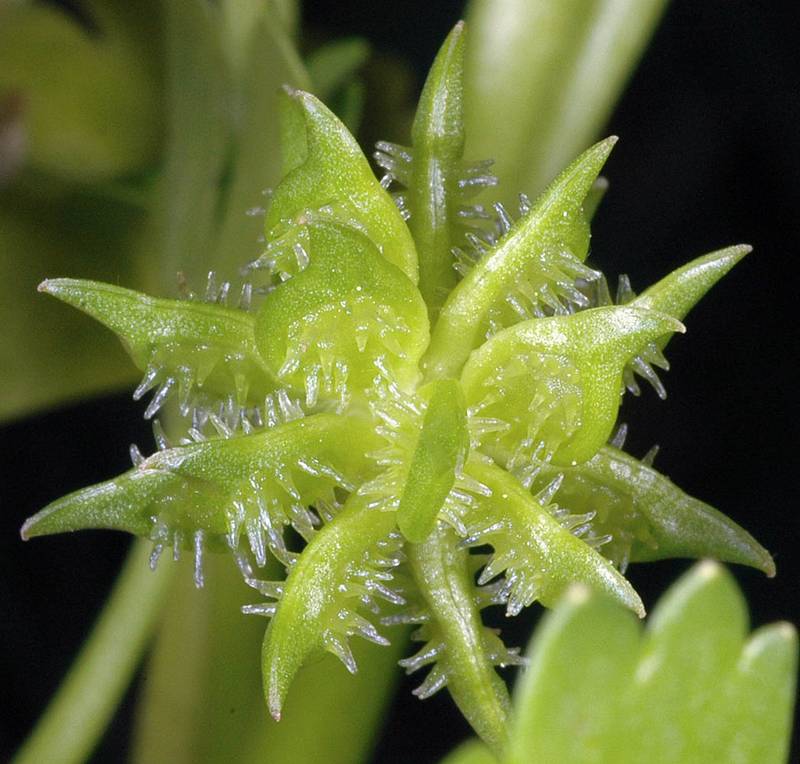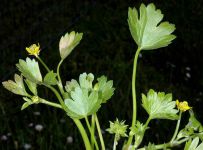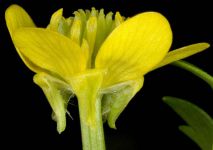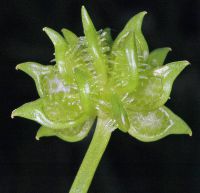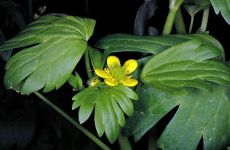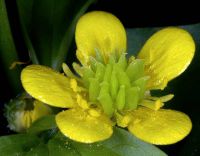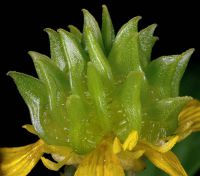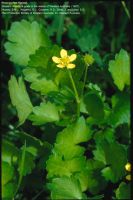Distribution: Occurring chiefly west of the Cascades crest and in the Columbia River Gorge in Washington; Washington to California, east across North America in scattered locations.
Habitat: Ditches and other moist places, often on cultivated land.
Flowers: April-June
Origin: Introduced from Europe
Growth Duration: Annual, Biennial, Perennial
Conservation Status: Not of concern
Pollination: Bees, flies, butterflies, beetles
Mostly glabrous annual from stout, fibrous roots, the 1-several stems simple below and forked above, 1-4.5 dm. tall, often hollow.
Basal leaves long-petiolate, the blades reniform to cordate, 1.5-6 cm. long and broad, shallowly divided into 3 lobed segments; cauline leaves similar, short-petiolate.
Pedicels single-flowered, stout, often recurved, 1-6 cm. long; sepals 5, membranous, spreading to reflexed, 4-7 mm. long; petals 5, yellow, narrowly obovate, 5-8 mm. long; nectary scale oval, about half as broad as the basal portion of the petal, the lateral margins attach half their length; receptacle sub-globose; stamens about 10; pistils usually 5.
Achenes strongly flattened, the faces with short spines; stylar beak stout, flattened, curved, about 2.5 mm. long.
Publication: Sp. Pl. 1: 555. 1753.
PNW Herbaria: Specimen records of Ranunculus muricatus in the Consortium of Pacific Northwest Herbaria database
WA Flora Checklist: Ranunculus muricatus checklist entry
OregonFlora: Ranunculus muricatus information
E-Flora BC: Ranunculus muricatus atlas page
CalPhotos: Ranunculus muricatus photos

